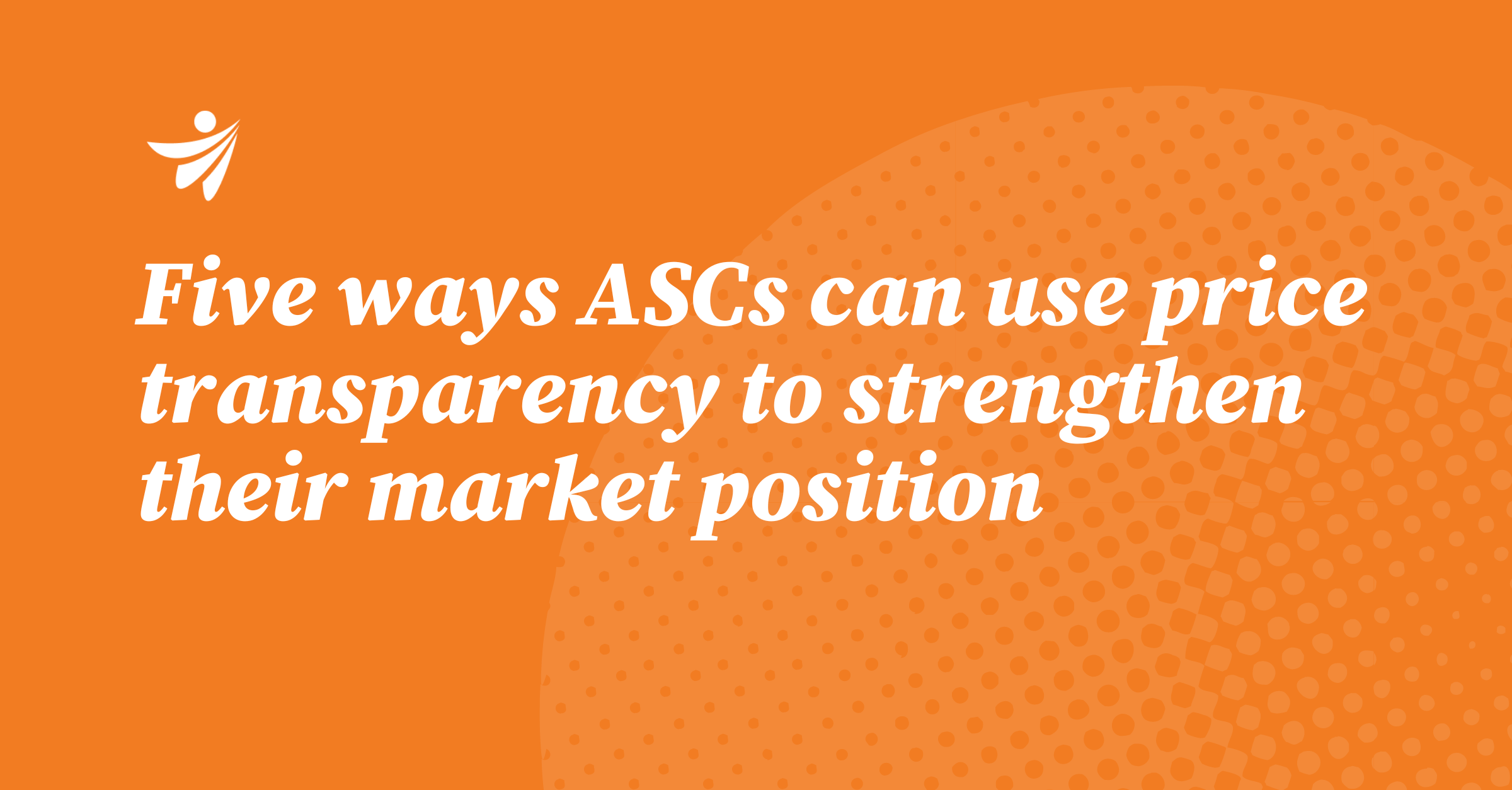
Price Transparency
Apr 18, 2024
Price Transparency | March 26, 2024
Historically it has been difficult, if not impossible, for patients to figure out prices for hospital services and procedures ahead of time. However, new regulations from the Centers for Medicare & Medicaid Service in 2021 aim to change that. Under these requirements, hospitals must provide clear prices for the items and services they offer and make them accessible online. As patients become savvier about healthcare costs and spending, hospitals must be proactive about providing them with the necessary information to find a facility and care provider that best fits their needs and budget. As hospitals become more familiar with the mechanics of price transparency, they can start to post more comprehensive data in addition to prices to further differentiate from the competition. Combining quality and outcomes data with pricing can help hospital leaders articulate the unique value of their services. Using additional data sources such as patient satisfaction or physician ratings can also help to highlight the advantages they offer over competing facilities. Empowering patients with information to support their healthcare decision-making can also help attract and retain a larger volume of patients over time. In 2022, healthcare spending in the U.S. amounted to over four trillion dollars, an increase of 4.1% over the previous year. Rising costs are making patients more conscious of their healthcare spending than ever before, leading them to research hospital pricing in advance of non-emergency procedures and services. As we see in other industries, price does not necessarily indicate quality. Patients may assume that a more expensive service or provider is better, but that may not always be true. Enriching price transparency data with healthcare quality and outcomes data can help uncover deeper value insights beyond the cost of a service. This information is critical for developing strong payer and patient relationships for hospitals. Hospital performance data generally refers to metrics on clinical outcomes, patient satisfaction, and operational efficiency. A hospital with more effective patient protocols may have shorter hospital stays and fewer readmissions, saving both payers and patients money. Hospitals can use these insights to negotiate better rates with health plans and to demonstrate care quality as a selling point to consumers. Hospitals can also compare positive performance data to industry benchmarks and standards, demonstrating where their metrics are higher than average. Showing a track record of consistent high-quality care and a commitment to excellence can attract patients who are looking for the best possible providers. It can help the hospital position itself as a premier provider, justifying higher prices and giving patients greater peace of mind with proof they can expect to receive a very high standard of care. Hospitals can also use performance data to identify areas where improvements can be made and to instill a culture of continuous quality enhancement. One aspect of performance hospitals may focus on is utilization. Looking at metrics like bed occupancy, average stay lengths, readmission rates, patient throughput, and usage rates of specific services, hospital leaders can: These insights give hospital leaders critical visibility into whether facilities are performing efficiently and help them provide ongoing high-quality patient care and satisfaction. They can also help hospitals keep costs down by redirecting resources toward services and procedures that are in higher demand, leading to even greater value for patients. Beyond finding opportunities for highlighting value in their marketing and advertising strategies, using data to identify and eliminate operational inefficiencies can help hospitals save money. They can pass on the savings to patients or reinvest that revenue to support better patient care. Either way, fewer wasted resources help hospitals attract more patients seeking high-value care for their healthcare dollars. There are other benefits as well. Because value-based care holds providers accountable for performance and patient outcomes, hospitals that show evidence of high-quality care can negotiate more favorable contracts with payers. Provisions can include higher reimbursement rates and incentives for meeting quality benchmarks. As hospital price transparency gains traction, both patient and payer expectations of value will change. To survive this shift, hospital leaders should find ways to use price transparency to their advantage. “Price transparency mandates are unlocking access to highly valuable data for healthcare organizations,” notes Clarify Health CEO Terry Boch. “With financial pressures, technology changes, and growing competition, organizations need to move quickly to differentiate and plan for growth in their markets.” Combining pricing information with insights about hospital and provider performance can help hospitals articulate their value to consumers and payer partners.Enriching price transparency with quality and outcomes data to uncover value
Leveraging hospital performance data
Embrace price and performance data transparency